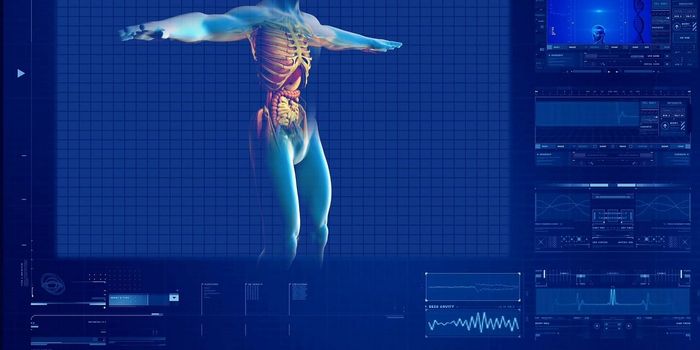Testing for Liver Disease, Before Symptoms Appear
An international team of researchers has created a diagnostic test for liver damage, one that can be used before symptoms even begin to appear. Reporting in Advanced Materials, scientists from University of Massachusetts Amherst and colleagues at University College London (UCL) hope to advance the treatment of liver disease and prevent the scarring in the liver that can lead to a fatal illness. Their new diagnostic tool works in about 45 minutes or less. A test that can be used before the disorder starts to show up is especially important in liver disease.
"Liver disease is the third biggest cause of premature mortality in the UK, and one of the only leading causes of death that's on the increase. The major problem is that it's asymptomatic, meaning that it goes unnoticed until late stages of the disease when the damage is irreversible," explained the co-lead author of the study, Professor William Rosenberg of the UCL Institute for Liver & Digestive Health.
About half of all the adults in the western world will face an increase in their risk of liver disease because of alcohol intake or obesity. Only a small percentage of those people will experience liver damage, but it's difficult to know which ones will; this test will help with that problem.
"We hope that our new test could be used on a routine basis in GP surgeries and hospital clinics to screen people who face an elevated risk of liver disease, but don't yet show signs of liver damage to identify those with serious fibrosis, so that they can access treatment before it's too late. This may open the door to a cost-effective regular screening program thanks to its simplicity, low cost, and robustness," Rosenberg said.
The video has more information about the stages of liver disease.
A sensor that is attached to a fluorescent indicator was used in this work. There is a color change depending on which chemicals are present in a blood sample. The researchers tested their invention on three different groups of people: early- and late-stage liver fibrosis patients and healthy individuals. The sensor did indeed turn colors to reflect the health status of each person.
"By comparing the different samples, the sensor array identified a fingerprint of liver damage. This method is known as a chemical nose, as it can recognize the difference between healthy and unhealthy blood samples without relying on known disease markers," explained co-lead author Dr. William Peveler, who worked in the UCL Chemistry department before heading to the University of Glasgow. It's the first time this approach has been validated in something as complex as blood, to detect something as important as liver disease," he added.
80 percent of the time, this test was able to distinguish between healthy people and people with liver disease, a vast improvement over current diagnostic methods. It may take a few more years for the new sensor the reach the clinic; the team wants to refine it and make sure it’s ready for clinical applications.
Sources: AAAS/Eurekalert! Via University College London, Advanced Materials



![WGS for rare disease diagnosis [eBook]](https://d3bkbkx82g74b8.cloudfront.net/eyJidWNrZXQiOiJsYWJyb290cy1pbWFnZXMiLCJrZXkiOiJjb250ZW50X2FydGljbGVfcHJvZmlsZV9pbWFnZV84MmRlM2UyYjA5M2Q3ZTYwOTI3Zjc1YTRjOWU2N2RmMjkzMThjMTJkXzI1MDcucG5nIiwiZWRpdHMiOnsidG9Gb3JtYXQiOiJqcGciLCJyZXNpemUiOnsid2lkdGgiOjcwMCwiaGVpZ2h0IjozNTAsImZpdCI6ImNvdmVyIiwicG9zaXRpb24iOiJjZW50ZXIiLCJiYWNrZ3JvdW5kIjoiI2ZmZiJ9LCJmbGF0dGVuIjp7ImJhY2tncm91bmQiOiIjZmZmIn19fQ==)





